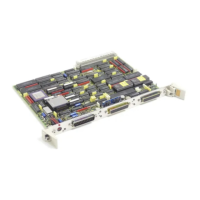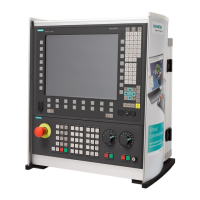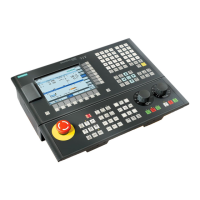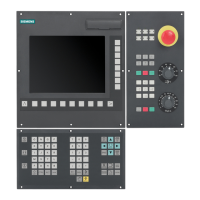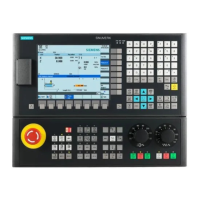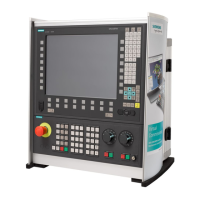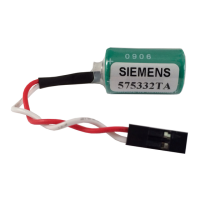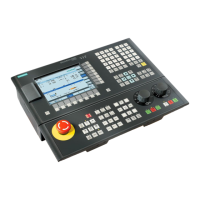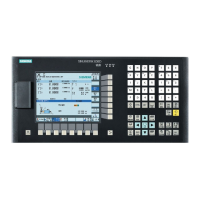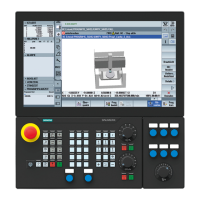2 Fundamentals of Programming 05.91
2.5 Character set
2.5 Character set
It is always possible to choose between two codes for programming:
• DIN 66024 (ISO) or
• EIA-RS 244-B.
The examples used in this Guide are based on the ISO code. The following characters are
available in ISO code for formulating program, geometric and process statements:
Address letters
A, B, C, D, E, F, G, H, I, J, K , L, M, N, P, Q, R, S, T, U, V, W, X, Y, Z
Lower-case letters
a, b, c, d, e, f, g, h, i, j, k, l, m, n, o, p, q, r, s, t, u, v, w, x, y, z
Digits
0, 1, 2, 3, 4, 5, 6, 7, 8, 9
Hexadecimal digits with CL 800 machine code
a, b, c, d, e, f (cf. CL 800 Planning Guide)
Letter
O (Input of tool offset [TO-TOOL OFFSET])
Printable special characters
%, (, ), +, – , /, :, ., =, *, @
Permissible addresses:
A Freely assignable address N Subblock
B Freely assignable address P Number of subroutine passes
C Freely assignable address Q Freely assignable address
D Tool offset number R Arithmetic parameter
E Freely assignable address S Spindle speed, S function
F Feedrate T Tool
G Preparatory function U Freely assignable address
H Auxiliary function V Freely assignable address
I Interpolation parameter W Freely assignable address
J Interpolation parameter X Freely assignable address
K Interpolation parameter Y Freely assignable address
L Subroutine Z Freely assignable address
M M function
Data input
The following characters are not processed or stored:
HT = Horizontal tabulator
SP = Space
DEL = Delete character
CR = Carriage return
Other control characters are shown in the code table.
Data output
The following characters are generated:
SP (after every word)
CR generated twice after L
F
or once before L
F
(setting data)
2–8
© Siemens AG 1991 All Rights Reserved 6ZB5 410-0HD02
SINUMERIK 880, (PG)

